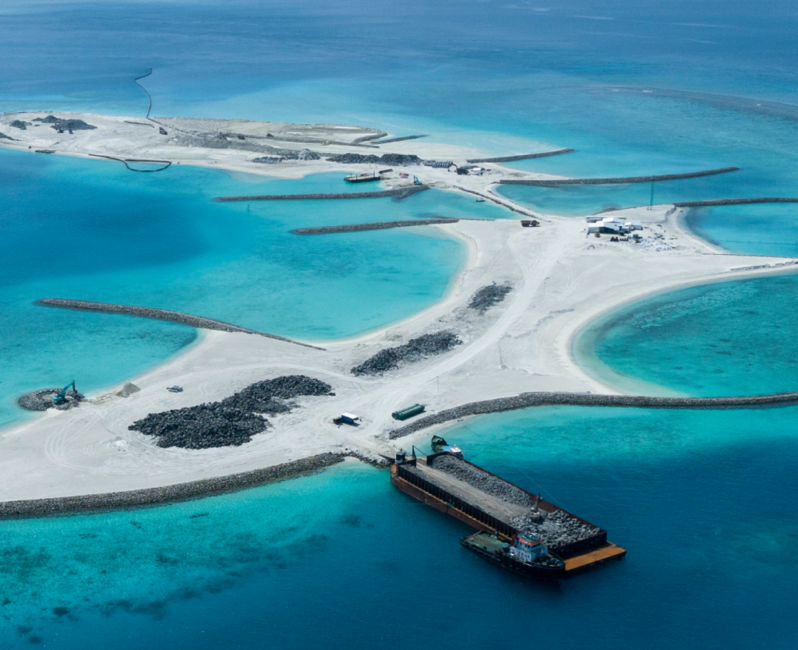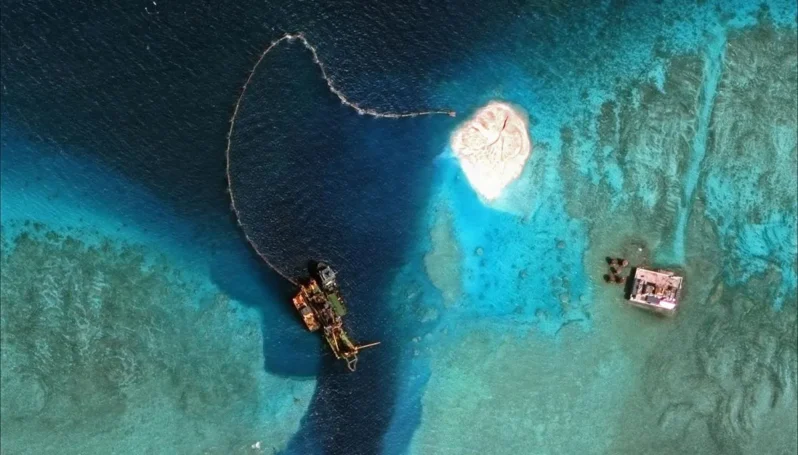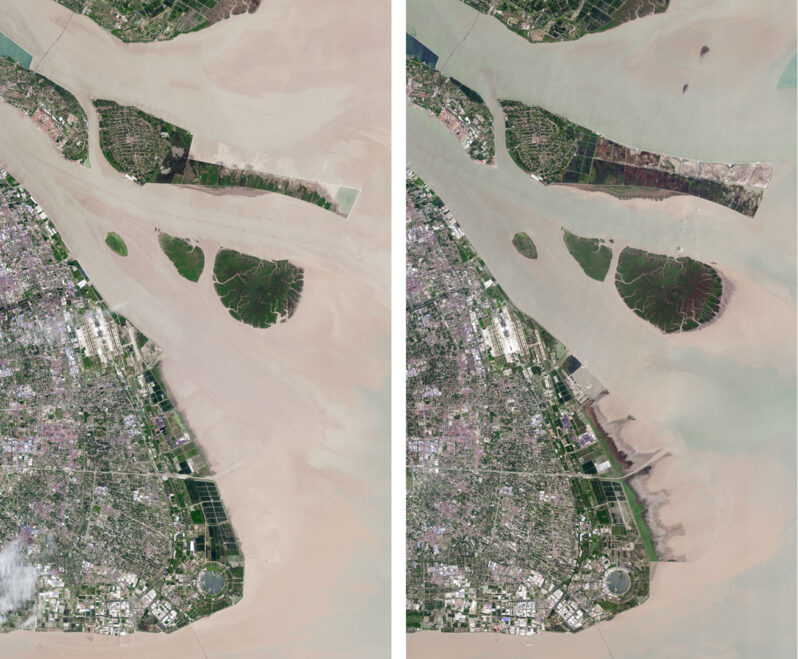Reclamation: A flawed solution – Beneath the Sands ERC

A deep dive into the rationale behind some of Asia’s reclamation projects, the toll they take on our environment and communities, and the search for more sustainable alternatives.
Reclamation is seen as a solution for countries to deal with increasing land demands, by expanding their territory and rehabilitating previously uninhabitable lands or seas. Yet, the process guzzles an alarming amount of sand, causing massive environmental damage as well as a rise of transnational criminal syndicates trading in illegal sand..
What China Has Been Building in the South China Sea – the New York Times

China has been rapidly piling sand onto reefs in the South China Sea, creating seven new islets in the region. It is straining geopolitical tensions that were already taut.
China’s activity in the Spratlys (Islands) is a major point of contention between China and the United States and was a primary topic of discussion between President Obama and President Xi Jinping of China during the Chinese president’s visit to the White House in September. On Monday, the United States sent a Navy destroyer near the islands, entering the disputed waters…
Cities Are Rapidly Reclaiming Land at Risk of Extreme Sea Level Rise – Hakai

As the sea rises and the population booms, builders around the world are in a race to transform coastal bays and shallow seas into new land. Yet don’t mistake this rush of land reclamation as a response to the challenges we face. “It’s built for rich people,” explains Dhritiraj Sengupta, a physical geographer at England’s University of Southampton. Sengupta’s latest research shows there’s been a huge increase in the use of reclaimed land for luxury hotels, shopping areas, and high-end living spaces—developments designed to boost a city’s global reputation…
New Land Creation on Waterfronts Increasing, Study Finds – AGU

Humans have added approximately 900 square miles of land to urban coastlines this century, and we’re building more…
Humans are artificially expanding cities’ coastlines by extending industrial ports and creating luxury residential waterfronts. Developers have added over 2,530 square kilometers of land (900 square miles, or about 40 Manhattans) to coastlines in major cities since 2000, according to a new study…
